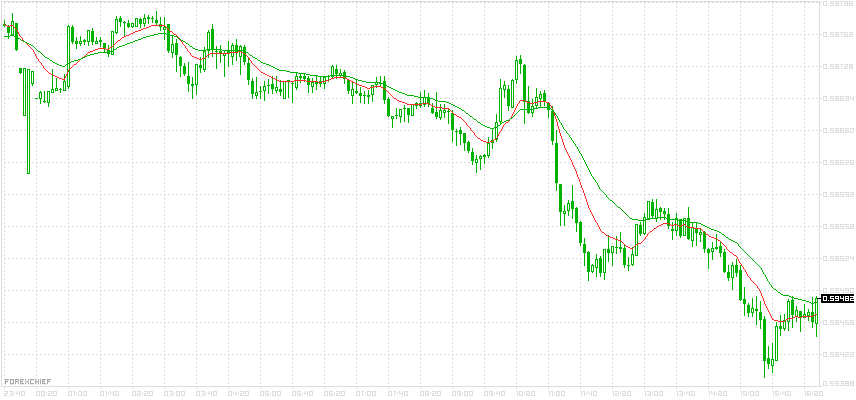Graphique du taux de change Forex NZD USD
Quotes

New Zealand Dollar vs US Dollar
Dollar néo-zélandais contre dollar américain
La paire NZD/USD est la principale monnaie de matières premières d’Asie et fait partie des dix actifs les plus échangés au monde. Elle est devenue populaire il y a seulement quelques années et représente désormais jusqu’à 10 % du volume total des échanges sur le marché. L’influence du dollar américain est très forte. Le taux de change en ligne du dollar néo-zélandais contre le dollar américain reflète une dépendance économique fondamentale vis-à-vis des grands partenaires commerciaux (États-Unis, Australie, Japon), rendant nécessaire une analyse continue de leurs économies.
Les facteurs fondamentaux suivants influencent fortement les prévisions actuelles du Forex NZD/USD : les principaux indicateurs économiques des États-Unis, du Japon, de l’Australie et de la Chine (taux d’escompte, PIB, inflation, taux de chômage, IPC, PMI, etc.) ; les déclarations des responsables officiels et des institutions financières de ces pays ; les annonces de la Banque de réserve de Nouvelle-Zélande (RBNZ) et de la Réserve fédérale américaine (FRS) ; les interventions monétaires du yen japonais et du yuan chinois ; l’indice CRB du Bureau de recherche sur les matières premières, qui reflète l’état d’un panier de biens de consommation dont la majorité est exportée par la Nouvelle-Zélande (bois, lait, laine, viande) ; la dynamique des prix des matières premières (pétrole, minerai de fer, métaux non ferreux, produits agricoles) et des indices boursiers (Hang Seng, KOSPI, Nikkei 225, SET50, Composite, TOPIX, S&P 500), qui influencent les économies de ces pays ; ainsi que les conditions météorologiques ayant un impact sur l’agriculture.
La paire dollar néo-zélandais / dollar américain présente une forte liquidité pendant presque toutes les sessions de trading (jusqu’à 4 % du volume total du marché asiatique). Elle réagit bien à l’analyse technique lorsqu’elle repose sur des bases fondamentales stables : le graphique Forex en ligne NZD/USD réagit de manière cohérente aux figures chartistes et aux niveaux de support/résistance.
Les principales opérations concernent le commerce des matières premières, les contrats d’options et CFD, ainsi que les opérations de change menées par la RBNZ et la Banque du Japon. La dynamique active des facteurs fondamentaux entraîne presque toujours des mouvements de prix significatifs. Au cours des deux dernières années, le graphique NZD/USD a montré une volatilité quotidienne stable, offrant des opportunités de trading de tendance avec un niveau de risque moyen.
























